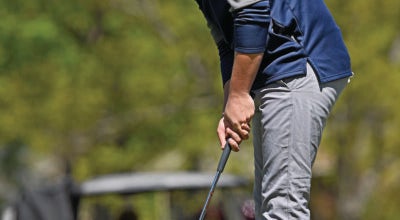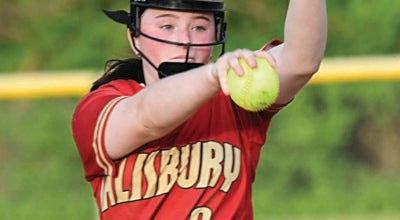College Baseball: New bats will change game
Published 12:00 am Monday, January 24, 2011
By Mike London
mlondon@salisburypost.com
There were 770 runs scored and 120 home runs launched in Catawba’s 53 baseball games last season.
Coach Jim Gantt expects those offensive numbers to decline sharply in 2011.
Not because Catawba graduated all its hitters, but because the bats the Indians and their opponents will be using will be a lot like the ones guys swung in the good ol’ days.
“Basically, all the bats that were used last year are illegal by NCAA rules now,” Gantt explained. “Our guys will still be using aluminum bats, but it will be metal that plays a lot like wood. The difference is no more than 3 percent.”
Metal bats were introduced in college baseball in 1974 and quickly took over. Bat technology progressed over the decades, and hitters basically have been able to swing increasingly lighter bats with increasingly greater force.
The last straw for some baseball purists was the 21-14 slugfest between powerhouses Southern Cal and Arizona State in the 1998 College World Series. That game, which included nine home runs, made it clear that even elite pitchers, some throwing 90 mph, had little chance against the high-tech aluminum Louisville Sluggers being wielded by two muscled-up teams.
The NCAA’s revised standards for 2011 have eliminated all bats that generate speed and distance above certain standards. Essentially, the NCAA has done away with all metal bats that dramatically outperform wood.
Part of the catalyst for change was the safety issue, especially pitcher safety. Hurlers, 20 yards from the batter’s box, have been helpless targets for monsters mashing missiles in their direction for too long.
The other more subtle reason for change is NCAA powers-that-be would like to return baseball to its roots — lower-scoring games in which coaches opt to steal and hit-and-run instead of waiting patiently for someone to crank a metal-aided, three-run homer.
In Division II, offense had gotten out of hand, and fireworks, not to mention three-hour games, were automatic once the weather warmed up in a cozy hitter’s haven like Catawba’s Newman Park.
While nine SAC regulars batted higher than .400 last season, Catawba freshman Nick Lomascolo’s 3.45 ERA was the lowest of any starting pitcher in the league. Only two others checked in under 4.00.
Lenoir-Rhyne’s staff ERA was an inflated 8.53, and Brevard’s was a scary 9.66.
It was time to do something.
“The new rules are going to change the game, and I’m all for it,” Gantt said. “ I’ve gotten tired of slow-pitch softball. This is going to bring a little strategy back into it.”
Catawba’s recruiting will change. The emphasis will be more on speed, pitching and defense, less on power.
“You’re not going to have that trampoline effect any more with the ball flying off the bat, but a guy who can hit will still be able to hit,” Gantt said. “But that guy who could only hit because of the bats is done. That 6-2, 220-pound guy people used to put in left field because he might hit a home run won’t have a place now.”
Groundballs are going to come off bats more slowly now and fewer singles will sizzle through the infield. The bloop hits that once dropped in front of outfielders now are going to be lazy popups to infielders.
Most important, some soaring flyballs that once crashed off the walls of Newman Park or drifted over them are going to settle harmlessly into the glove of a waiting outfielder.
Pitchers are going to love it, but they deserve it. They’ve paid their dues.
While the average Catawba contest last season wound up 9-6, there should be more 5-4, maybe even 3-2, games in 2011. Everyone agrees that every run is going to take more work and matter more.
Gantt doesn’t have a problem with that, and he’ll probably get home 30 minutes earlier on gamedays.
“Our guys will adjust to the bats because they know they have to adjust,” he said. “And it will be a better game.”
•
Catawba’s season begins Feb. 1. The Indians’ preview is upcoming.





